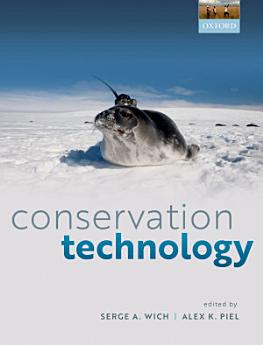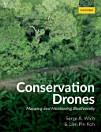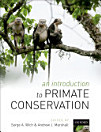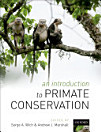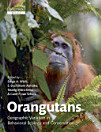Conservation Technology
Serge A. Wich · Alex K. Piel
ઑગસ્ટ 2021 · Oxford University Press
ઇ-પુસ્તક
320
પેજ
family_home
પાત્ર
info
reportરેટિંગ અને રિવ્યૂ ચકાસેલા નથી વધુ જાણો
આ ઇ-પુસ્તક વિશે
The global loss of biodiversity is occurring at an unprecedented pace. Despite the considerable effort devoted to conservation science and management, we still lack even the most basic data on the distribution and density of the majority of plant and animal species, which in turn hampers our efforts to study changes over time. In addition, we often lack behavioural data from the very animals most influenced by environmental changes; this is largely due to the financial and logistical limitations associated with gathering scientific data on species that are cryptic, widely distributed, range over large areas, or negatively influenced by human presence. To overcome these limitations, conservationists are increasingly employing technology to facilitate such data collection. Innovative solutions have been driven by dramatic advances in the conservation-technology interface. The use of camera traps, acoustic sensors, satellite data, drones, and computer algorithms to analyse the large datasets collected are all becoming increasingly widespread. Although specialist books are available on some of these individual technologies, this is the first comprehensive text to describe the breadth of available technology for conservation and to evaluate its varied applications, bringing together a team of international experts using a diverse range of approaches. Conservation Technology is suitable for graduate level students, professional researchers, practitioners and field managers in the fields of ecology and conservation biology.
લેખક વિશે
Serge A. Wich is a Professor in Primate Biology at Liverpool John Moores University, Liverpool, UK and a honorary professor for the conservation of the great apes at the University of Amsterdam, Netherlands. Serge is also a co-Founding Director of the non-profit, ConservationDrones.org. Updates on his work can also be found on www.sergewich.com His research focuses on on primate behavioral ecology, tropical rain forest ecology and conservation of primates and their habitats. Research is strongly focused on the Indonesian island of Sumatra and Borneo and uses a mixture of observational and experimental fieldwork. He also uses emerging technologies such as drones for his work. Alex K. Piel is Assistant Professor of Anthropology at University College London, UK and Director of the Greater Mahale Ecosystem Research and Conservation Project in Tanzania. More on his work can be found at www.gmerc.org. Alex's research foci are twofold: (1) primate adaption to dry habitats and the implications for human evolution and (2) chimpanzee conservation in East Africa, Tanzania especially. He is primarily interested in how primate behaviour reflects the various environmental challenges posed to populations that live in open, mosaic landscapes.
આ ઇ-પુસ્તકને રેટિંગ આપો
તમે શું વિચારો છો અમને જણાવો.
માહિતી વાંચવી
સ્માર્ટફોન અને ટૅબ્લેટ
Android અને iPad/iPhone માટે Google Play Books ઍપ ઇન્સ્ટૉલ કરો. તે તમારા એકાઉન્ટ સાથે ઑટોમૅટિક રીતે સિંક થાય છે અને તમને જ્યાં પણ હો ત્યાં તમને ઑનલાઇન અથવા ઑફલાઇન વાંચવાની મંજૂરી આપે છે.
લૅપટૉપ અને કમ્પ્યુટર
Google Play પર ખરીદેલ ઑડિઓબુકને તમે તમારા કમ્પ્યુટરના વેબ બ્રાઉઝરનો ઉપયોગ કરીને સાંભળી શકો છો.
eReaders અને અન્ય ડિવાઇસ
Kobo ઇ-રીડર જેવા ઇ-ઇંક ડિવાઇસ પર વાંચવા માટે, તમારે ફાઇલને ડાઉનલોડ કરીને તમારા ડિવાઇસ પર ટ્રાન્સફર કરવાની જરૂર પડશે. સપોર્ટેડ ઇ-રીડર પર ફાઇલો ટ્રાન્સ્ફર કરવા માટે સહાયતા કેન્દ્રની વિગતવાર સૂચનાઓ અનુસરો.
